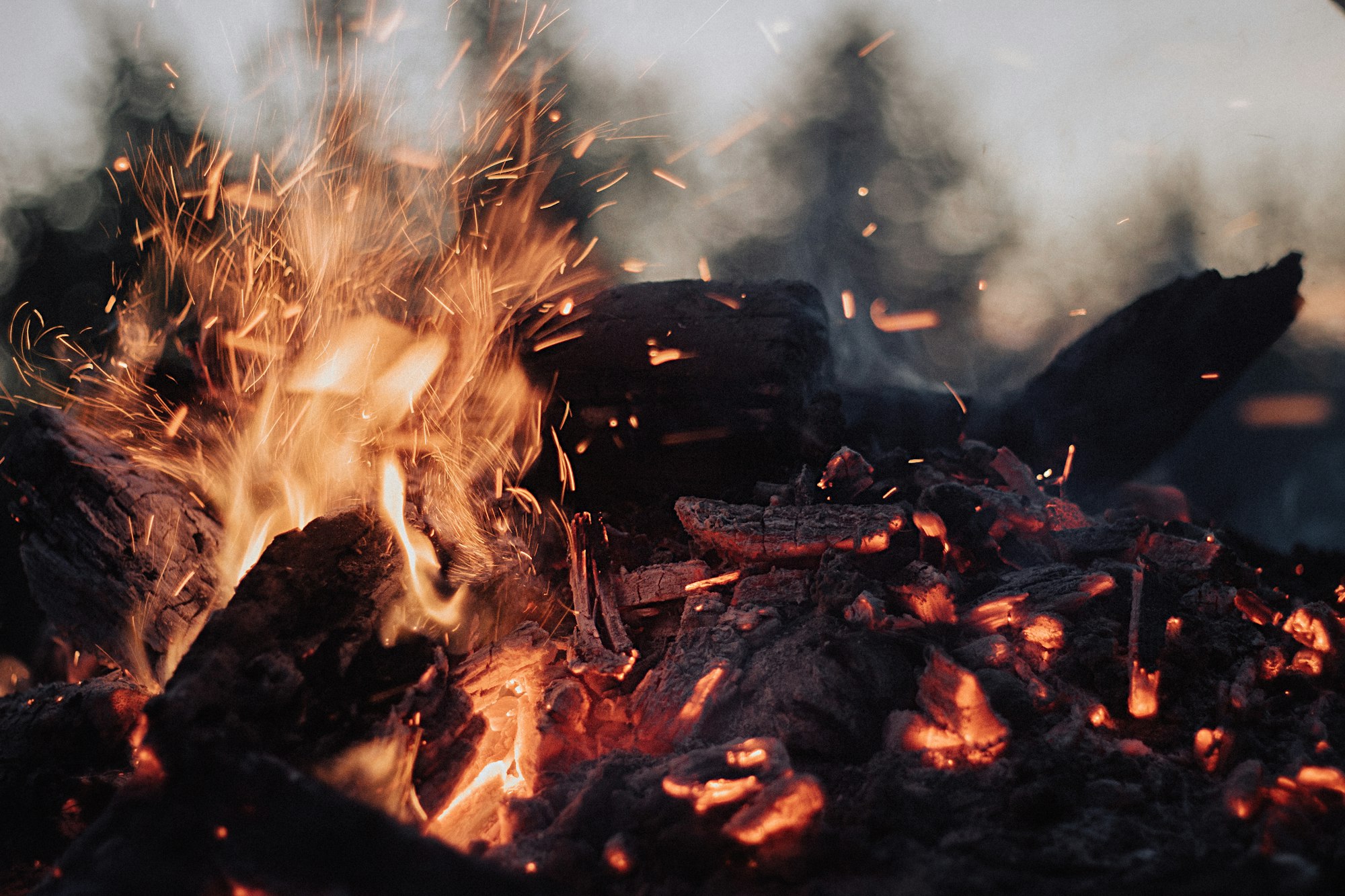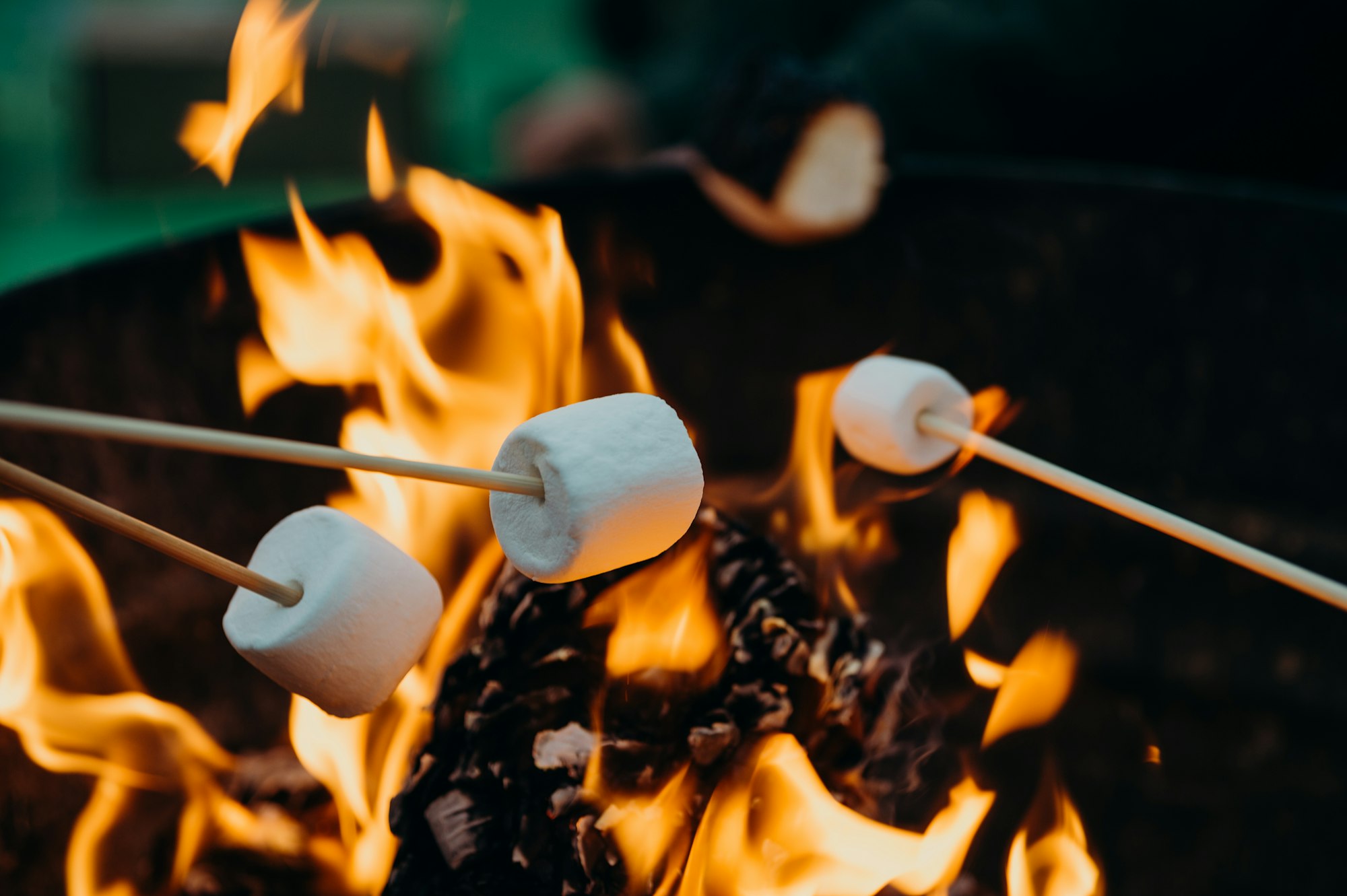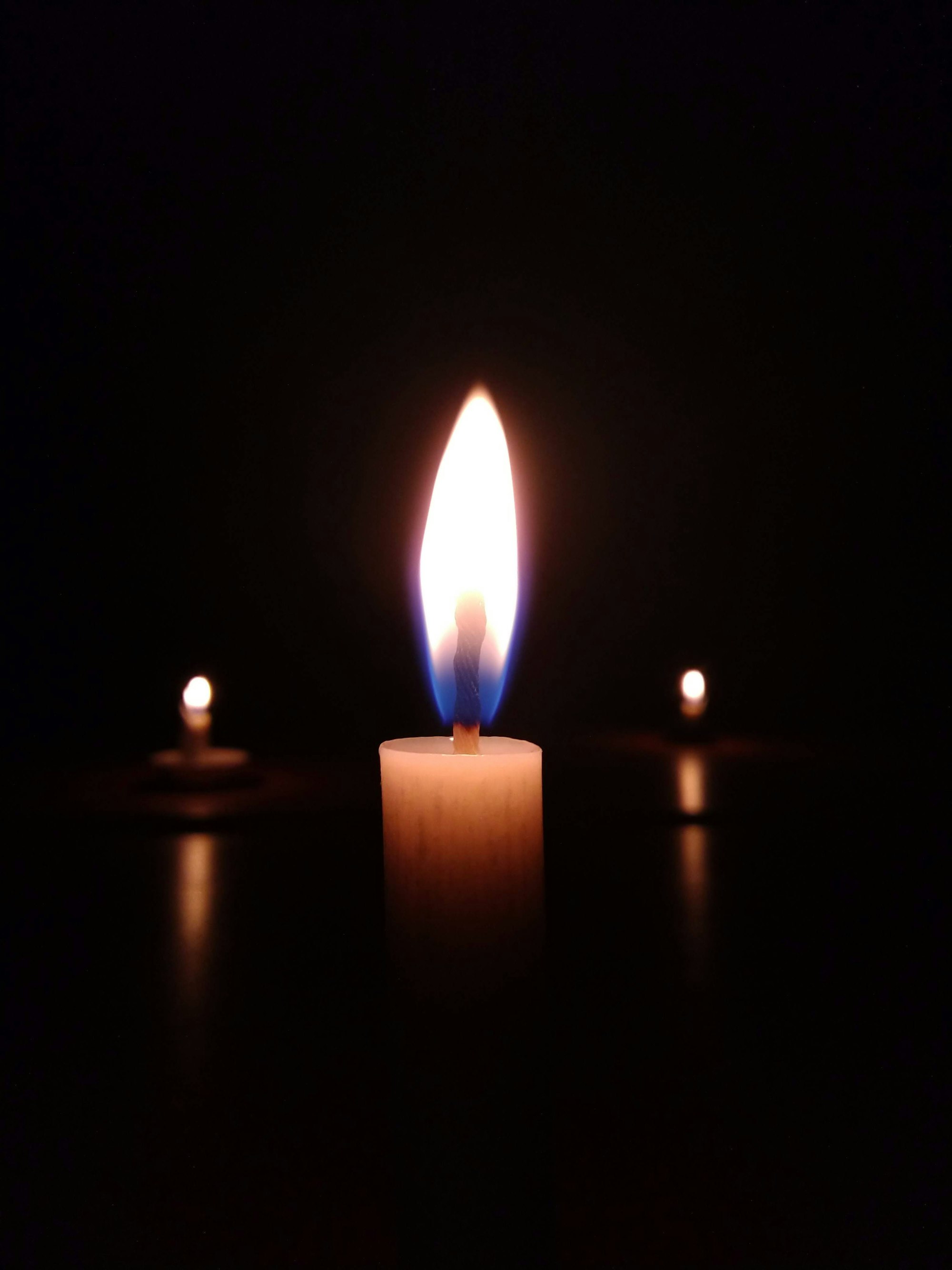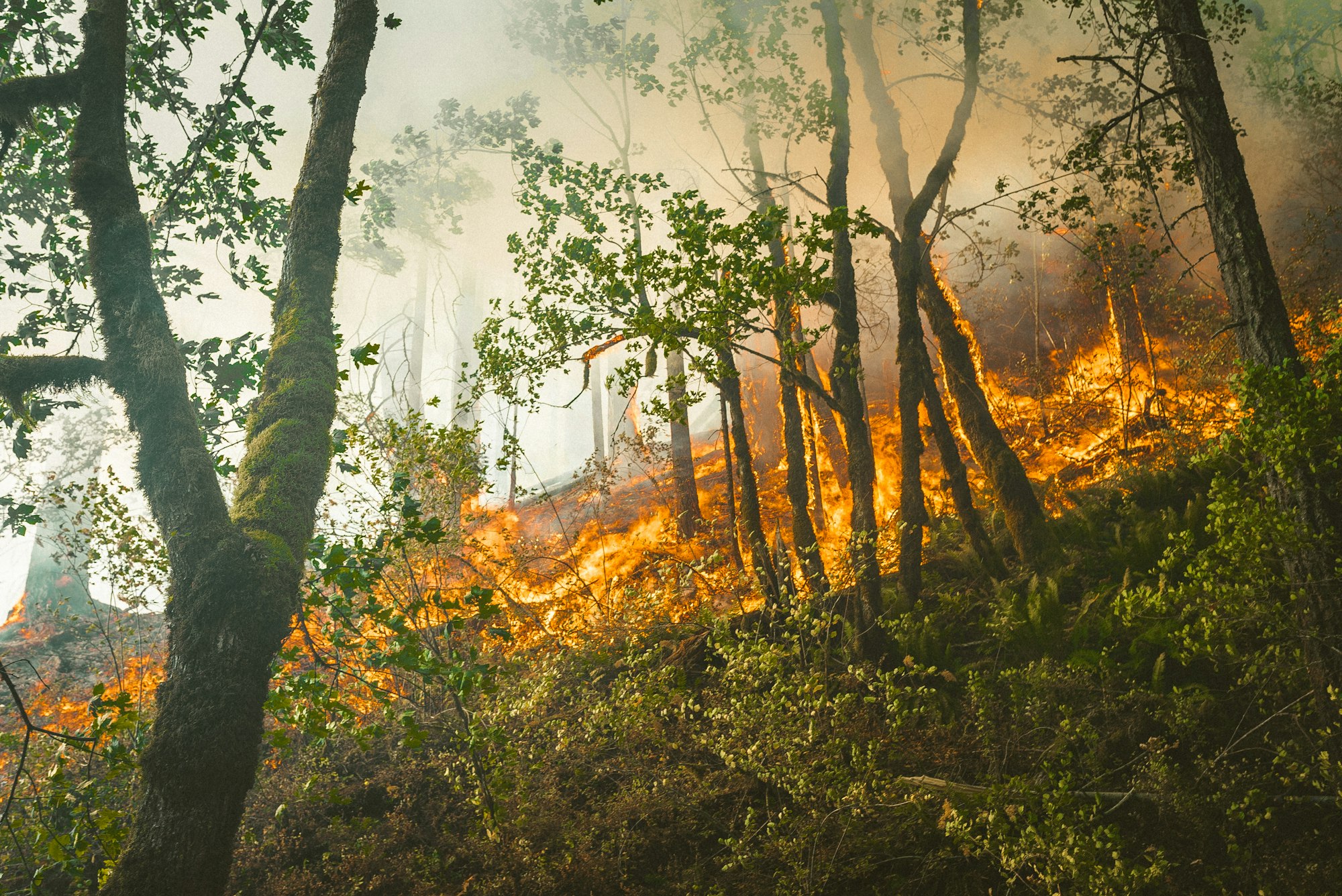What Are Flames? And...Can We Melt Wood?

When I was younger, I never really developed the fascination with flames that so many children seem to have. As exciting and thrilling as the danger from it might have been, I just wasn't a big fan of the idea of intentionally swiping my hand through an ember, or lighting matches to see how they would burn (my brother used to love doing this). Then, I started hearing of kids getting sent to hospitals due to second-degree burns, and of boiling water merging their clothes with their skin - and I just couldn't have been happier to be away from the stuff.
Campfires were nice, though. I don't know how many of you have participated in school camping trips, but when I went on my own - undertaking the Duke of Edinburgh's award expeditions - it was always the campfires that highlighted them. For me, it was probably due to the time I shared with my friends there, but I have a suspicion that many surrounding the fire were just enjoying the sparks and wisps of heat flashing in front of them. I can't blame them; the photos were amazing.

A couple of days ago, when I was busy recolleting past memories, I asked myself a seemingly innocuous question. 'Why did the campfire burn?' I thought. Undoubtedly, it was the kindling acting as a fuel, enriched with the reactive oxygen gas around it and ignited by some catalytic heat in the beginning. But this is just a general theory of combustion - the one that most people are taught in middle school, I think.
So I dug deeper. 'How exactly does wood start burning?' I wondered. And then, like a spitting frying pan catching heat, I suddenly came upon the most random question I'd had that day: 'Can we melt wood?'
Let's take a look at that.
The Definition Of A Flame
In principle, there are only two types of chemical combustion: complete combustion and incomplete combustion. The former is what occurs when a fuel reacts with oxygen gas to produce only carbon dioxide and water. This is what happens when we burn the fuel in open spaces where there is an excess of oxygen in the air. Should you ignite the fuel in a closed space, however, the amount of oxygen gas will not be sufficient to completely react with the fuel - and so it will start producing carbon monoxide and soot. This is incomplete combustion, and you do not want this. Carbon monoxide can prevent oxygen from binding to the haemoglobin proteins in your blood, and it will suffocate you very quickly and very fatally.
(Sidenote: more advanced chemistry actually redefines and generalises combustion as any reaction between a fuel and an oxidant that produces oxidized products. Albeit, the most common of these are the processes already mentioned, and so I will assume them to be the only relevant points of interest here.)
Regardless, these combustion reactions are exothermic, meaning that more heat energy is released when their products form than it is absorbed when their reactants are broken down. In other words, as it takes place, the reaction is hotter than its surroundings and gives off energy. Combustion reactions are known for this property, as is apparent when you try to stick a finger in them (which I advise against doing).
Once you've got the reaction going, it may produce a flame. But what really is a flame, anyway? For some reason, I had to look for this more than I had thought I'd have to, but this is what I came up with: a flame is the zone around an exothermic combustion where heated products of the reaction emit electromagnetic radiation. This may sound like a mouthful, but it simply tells you that different forms of light are emitted by the product particles. To visualise this a bit more easily, let's take a look at a burning candle.

As you can see in the image, we can actually split the flame into different sections according to their colour. First, we have the dark zone, which is the blue part of the flame found below. This is directly next to where combustion is taking place, and so any radiation emitted here (i.e. blue and ultraviolet light) is produced from chemical reactions in a process known as chemiluminescence. Interestingly, such reactions feature a significant concentration of ions that are still yet to react, making the zone similar to dilute plasma. Cool, huh?
Anyway. Further up the flame chemiluminescence ceases to take place. Instead, lower energy radiation (like red and infrared light) is released as product soot particles rise in temperature - a process called black body radiation - which you may liken to how red-hot metals glow. This area is known as the luminous zone, extending up to the hottest part of the flame and surrounded by a coat of water vapour known as the non-luminous veil (as no light is emitted here).
Depending on the temperature of the flame, the colours involved can vary pretty drastically - with the luminous zone turning yellow to green to blue as the heat increases. Since such colours come from soot particles in the air, this also explains why mechanics and lab scientists always try to use invisible flames when heating things up - no soot means less incomplete combustion is occuring and hence less carbon monoxide is being produced. Makes sense.
Finally, in case you're curious - the word 'fire', from what I understand, only refers to the combination of both a combustion and the flame that it produces. Now, then - onto burning wood.
Wildfires & Melting Wood
Considering the devastation that wildfires and heat waves have been causing around the world recently, this topic may be somewhat of a sensitive matter. Nevertheless, I think the peril of these events has only made it that much more important to understand their nature, and so I hope this gives you some insight into it.

Given that wood and bark are made of live and dead plant cells, it is only natural that, when they burn, they release an amazingly complex range of molecules into the air. Reactions other than combustion can occur in the fire, with molecules like nitrogen oxides and cyclic furans and many other volatile organic compounds being constantly produced, destroyed and joined together. Many of these are toxic, and they disperse in the carbon monoxide and soot-filled smoke so quickly that it is safe to say that inhaling too much of the stuff would be a very bad idea. Wildfires are also rather hot, so it's probably not a good idea to stand in the middle of one in the first place.
The other issue with wildfires, unfortunately, is that they can begin very suddenly. Cellulose and lignin fibers that surround and bind plant cells in the wood have strong intermolecular bonds that prevent them from splitting or reacting easily, so they only combust after high enough temperatures have been reached. Once these thresholds are crossed, however, the first reactions release so much energy that nearby molecules begin breaking and combusting, too, and so on. Just like I talked about in my previous blog post - the one on cooking - this starts a chain reaction and becomes an enormous pain to stop (my sincerest respect goes to firefighters). The term scientists use for this is spontaneous combustion.
Furthermore, for exactly this reason, wood does not melt. Even in a vacuum chamber where there is no oxygen and where combustion would be unable to occur, heating wood would only break the bonds in the material and would completely alter its composition, turning it into charcoal. Of course, this question has not really received much attention from the research community (I wonder why?), and so melting wood might still be possible via pressure manipulation shenanigans or some indirect approach to the problem. Unfortunately, such experiments have yet to be published.
It's really anti-climactic, honestly, but I've long since learned that much of science is an emotional rollercoaster like that. Oh well.
Needless to say, though studies have been made to investigate the mechanims of wildfires, we still have much to uncover in the field. We do know that trees that contain a lot of oil, such as eucalyptus trees native to Australia, ignite more easily than ones that don't. Personally, I would recommend that you read about the species of trees that exist where you live, just to make sure that they won't pose a danger if the area gets much warmer in the future. Take caution.
References
- Chapman, K. (2020). The complex chemistry of fire. Chemistry World. Retrieved from https://www.chemistryworld.com/features/the-complex-chemistry-of-fire/4012100.article
- NHS (2019). Carbon monoxide poisoning. NHS. Retrieved from https://www.nhs.uk/conditions/carbon-monoxide-poisoning/
- Kondratiev, V. N. (2020). Combustion. Encyclopedia Britannica. Retrieved from https://www.britannica.com/science/combustion
- Wikipedia Contributors (2019). Flame. Wikimedia Foundations. Retrieved from https://en.wikipedia.org/wiki/Flame
- Sandia National Libraries (2018). Cracking the code to soot formation. ScienceDaily. Retrieved from https://www.sciencedaily.com/releases/2018/09/180906141629.htm
- Cheng, J. (2010). Can you melt a wooden log? Yale Scientific. Retrieved from https://www.yalescientific.org/2010/05/everyday-qa-can-you-melt-a-wooden-log/
